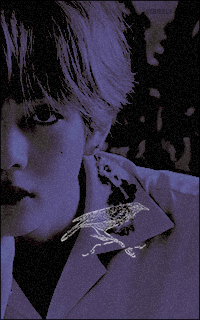thestral.

Messages : 807
Date d'inscription : 12/02/2015
 |  Sujet: Cours : Littérature Américaine. Sujet: Cours : Littérature Américaine.  Sam 6 Jan - 1:05 Sam 6 Jan - 1:05 | |
| | |
|
thestral.

Messages : 807
Date d'inscription : 12/02/2015
 |  Sujet: Re: Cours : Littérature Américaine. Sujet: Re: Cours : Littérature Américaine.  Sam 6 Jan - 1:06 Sam 6 Jan - 1:06 | |
| 18/10/2017 (cf the birth of america litterature, la fiche).
GOTHIC GENRE 1760s.
1760s > E. Burke
Tigerring pleasure and terror. Burke opposes the sublime to the beautiful, it makes reasoning impossible, goes beyong reason. The sublime is related with infinity, with excess. And w/ the irratinal somehow. It's aesthetic. It's powerful, infinite and dark.
Charles Brockden Brown is the first ever writer to developp the gothic genre. He feared the main narrative drive, the main agent for the story telling. Fear is also the main narrative drive. In addition, readers would experience some form of trangression (thrill, pleasure, delight), and also the notion of trespassing moral bounderies. Yet, in Brown's novels, we always return to the norms. Ex : the transgresser in the stories is always ultimately punished, and the fantastic events is always explained rationally.
The dif. w/ english forms of gothics is that Brown found inspi. in Am. events, themes and obsessions. Among these themes, the fear of religious fanatism. His first novel's called Wieland and published in 1798.
Racial issues, guilt over racism, the fear of miscegenation (= mixture of racism). Life on the American frontiere, or the European settlers. Fear of barbarism. Brown uses the incidence, indian hostility, gothic castles and chimeras. We can say than Brown transforms this idealised american pastoral into a nightmarish wilderness.
Brown often uses characters (stories) where human perception turns out to be misleading. A lot of these characters are proned to self-dellusion. He (Brown) was filled with doubts and uncertanities, torn appart btw on one hand an optimistic fait in science and on the other hand he was filled with the mecanism of the mind.
Since writers explore the human psyche, it gives a large immersion in the darkness of the mind. Brown emphasize the ambiguity of the natural moral self.
American gothic litterature explore the dark side of american identity.
ORAL ZELIE.
The fall of the House of Usher - Edgar Allan Poe (1840).
PB : What are the different elements that make this incipit part of the dark romanticism genre ?
I
Influence of Victorian settings.
Author sets the tone in the first line.
Describes his feelings.
He finds "finds it disturbing yet poetic" by making a personnification of the house itself.
He describes his arrival at the house as a "macabre discovery".
II
III
Somethic gothics = aliens
Some people prefered the irregularity of the ??
Gothic genre : genre of fiction characterized by gloomes often with a grotesque or supernatural plot unfolding in an eary or a lonely location. Poe revisits gothics. His short story epitomizes the advent of American gothic. It revolves around a glorious past haunting a present in ruins. He focalises the whole story through his own eyes.
Outline revolving about the reliability of the narrator's perception.
I - PICTURING HORROR
Cliché of isolate landscape. Theme of darkness. Horrific vision which corresponds to a horrific vision. Legend of the cursed poet (Baudelaire, Mallarmé, etc). Link btw nature and psyche, influence of landscape on mindscape.
II - ENTRHOPOMORPHIC DESCRIPTION OF THE HOUSE.
House w/ human qualities : eyelike windows, etc. Tries to rationalize but yet mysterious and anxious.
III - AESTHETIC EXCESS.
Excecively long sentences. Radical, overwhelming wayn disturbing to the narrator. The narrator's ironic. Descript° of family (2nd half), very ancient, so excessive. Calls for a skeptical tount. The narrator obscures things instead of making them clearer.
ORAL D'ELEONORE.
Chapitre 5 pf TSL.
The impact of the Puritan society on Hester's life and behaviour.
I - HOW SHE'S
- lives in a small abandonned cottage far from civilisation
- the trees hid her house, hid her "sins" and "shames" that should be kept away from other ppl's eyes
- she has to be punished, cast away, bc she's a kind of an embarassment
- she lives alone and have to deals by herself with the way of finding food, clothes & other things
- even the poor thought they were superior to her bc she did something really bad
- even at church she's judged
II - SYMBOLISM
- she's the "bad", the "evil", the "cursed"
- she's not a "woman", a "mother", but just a "sinner"
- she can't grow anything anymore on her soil so it can be interpreted as a doom on her bc of her sins
- pearl, daughter born from her adultery, even other children look badly at her
- pearl is lonely, has no friends bc no one wants to be friend wis a person born from a sin
- hester's a lonely mom, shows that her husband isn't her for her
-- | |
|
